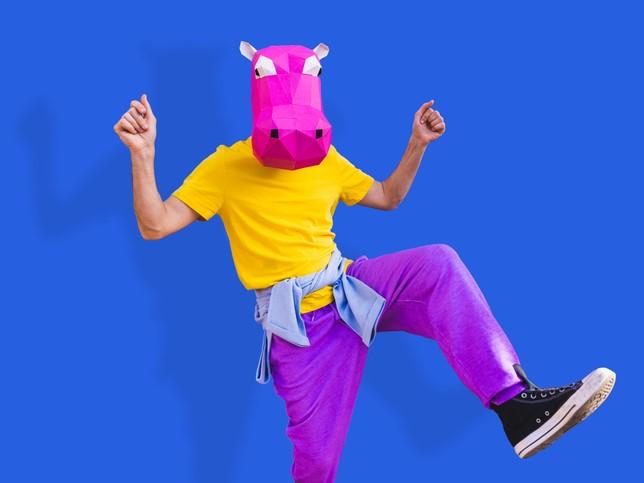I’ve sat with students in a lecture theatre as they hide behind open laptop screens or glance at their phones, hopeful that the lecture is going to be recorded. Is the power of social media responsible for their co-dependency with technology? Or are there ways to deconstruct the lecture and workshop formats to make them less hierarchical, formal and intimidating?
We have these rooms called lecture theatres, which are designed by architects and supported by IT departments. At the University of Kent, where I work, there are about 40 of them. Can they be revisited, reimagined?
The design of TED Talks being 18 minutes in length is guided by research that shows we have an attention span of 20 minutes. Face-to-face interaction is an invaluable dynamic for learning and mentoring – and, of course, the difference between the one-to-one or group tutorial and the formal lecture is immense. Can the territory in between be explored and developed?
- Spruce up lectures to capture the interest of all students
- What is the purpose of a university lecture?
- The rise and rise of the lecture-tainer
To this end, I have begun experimenting with “flectures” – a combination of the words “flexible” and “lecture”. At its most basic level, this is an idea, a provocation, to shift the norms of university behaviour and education delivery and investigate if the lecture theatre itself limits what is possible in terms of shared knowledge.
Flectures break up time into short segments no longer than 18 minutes, and it’s good to vary these durations – some can be as short as four minutes – to create a sense of continual surprise about what will happen next. Inviting questions at the start, adding short musical interludes and increasing somatic awareness through changes in physical position and seating all help to create a memorable experience within a room that was designed for sitting still and based on an Ancient Greek layout.
As a “visionaire” (creative thinker) working in a software company for eight years I found the format of the established monthly meetings dull and conventional. I gradually changed them to become more focused on community-building and to border on being entertainment, always including surprise elements, such as inviting bogus speakers or shifting stereotypical perceptions of individuals within the company – perhaps by turning the spotlight onto the gardener or the minibus driver (who was unexpectedly an amateur stand-up), by satirising senior management (with their consent) or making short surreal films in collaboration with different teams. Ultimately, these strategies created a very strong sense of community; each one was a project, an artwork
Similarly, the flectures we launched at the SHIFT festival – a celebration of hidden creativity at the University of Kent – are all quite different and respond to the spaces and rooms where they are happening.
For example, the flecture on law and ecology, which took place in the university’s state-of-the-art moot court (a replica courtroom), encouraged those who attended to be more than just an audience – they were participants invited to move around at regular intervals and occupy the judge’s seat if they wanted to. The most fruitful periods of discussion and interaction were when we were all standing, leaning against the benches as if we owned the space, which was the intention.
The very large flecture on creativity in arts and science, meanwhile, had an “audience” of 250 people in a concert hall. They were first assigned to a bank of tiered seating on one side. After about 30 minutes they were invited to move across the space so that the event then happened in the round. It was a challenge to negotiate this number of people but the atmosphere changed completely after the move. We became a more intimate and playful community of people sharing ideas.
When giving presentations about my own art practice to students, I try to make the experience extremely dynamic and full of surprise, so there’s little time for distraction. For example, short periods of silence, sudden engagement of highly focused eye contact, change of spoken voice volume, audience interaction such as a short well-being exercise, unexpected occurrences and prizes all help achieve a “performance lecture”. But of course, every lecture situation is a performance on some level. As lecturers, readers, professors, we are performers whether we like it or not, so to embrace this role can be empowering for the presenter and the audience. An element of surprise always works, as does an element of drama.
This isn’t about reformatting every lecture – but it is a provocation to open up questions about how we deliver, what we deliver and whether challenging these conventions can be energising and actually lead to less work. Can we let the students do more of the work for us/with us? Can they devise their own teaching strategies? Have you asked them what they think about sitting in a lecture theatre?
From my own experience delivering flectures, it’s clear that reimagining the traditional knowledge-sharing format of a lecture led to better engagement and a more enjoyable experience for all. If our students are more engaged, are they then gaining more from a lecture than just learning? And is this not why universities exist – to provide the ultimate learning experience?
Richard Layzell has been a leading innovator in the fields of live art, video and installation since the 1980s. He was commissioned by the University of Kent's Institute of Cultural and Creative Industries to explore its teaching and learning experiences. Over the course of 18 months, he spoke to many students and staff, and delved into schools and departments, to understand how and where these experiences could be attempted or done differently.
If you would like advice and insight from academics and university staff delivered direct to your inbox each week, sign up for the THE Campus newsletter.




comment